In Part 1 of this two-part series, Kevin Floyd of The Hay Merchant discusses how to age beers at home as well as types of beers that improve with age (and ones that don’t). Now we’re to the fun part: What to buy and cellar!
Floyd helpfully put together a list of 10 beers in three categories that are ideal for cellaring. These are generally easy to obtain; some are even pretty inexpensive. This is a great list, both for those just getting started or someone who has been cellaring for awhile but would like to add some new, well-considered picks to a collection.
By the way, we provided Joey Williams, beer department manager of the downtown Spec’s (who came up with his own top 10 beer list), an advanced copy of Floyd’s picks, so you can probably find most of the beers there.
WHAT TO CELLAR
Floyd broke down his 10 picks into three categories: beers that are available all year, beers that are issued seasonally and those that are limited release but produced in a large enough quantity that they shouldn’t be too hard to find. Additionally, he took care to select bottles that are stamped with the bottling date so you have a reference point when purchasing them. (At home I also use a label-maker to date bottles with the month I intend to open them because sometimes the date stamp fades.)
Cellar Group One: Readily Available All Year
Palo Santo Marron
Dogfish Head (Milton, Delaware)
American Brown Ale, 12% ABV
It’s aged in Palo Santo Marron fermentation vessels, which is a type of wood. Palo Santo Marron is good when it’s new, but it’s “hot”; over time you’ll get a much more mellow beer. It will become more complex over the next five years.
Orval
Abbaye Notre-Dame d’Orval (Gaume region, Belgium)
Belgian Pale Ale, 6.2% ABV
This is a great example of active fermentation in the bottle. It contains brettanomyces, a wild yeast strain. When Orval is young, from production up to six months, it’s hoppy in a European kind of way – grass-hoppy. (Unfortunately, here in the United States, we rarely get it that young.) After six months, the brettanomyces becomes the predominant flavor, and the funky barnyard characteristic comes to the forefront. It’s great when it’s brand-new but can easily be cellared 15 to 20 years. It will significantly change over the first five to seven years. After that, every year becomes less important. If you see it, attempt to buy at least two bottles, if not six, so you can drink one right now and then see how they age over time. This is also a great way to educate yourself.
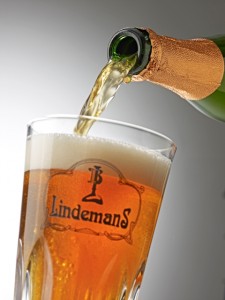 Cuvée René
Cuvée René
Lindemans (Vlezenbeek, Belgium)
Gueuze Lambic, 5.5% ABV
This beer is not going to significantly change over the first five years. You can drink it now and it will remain pretty much the same for a couple of years. The significant change in beers like this will occur over 10 to 15 years. This is a sour so it will develop more complex sourness. It has brettanomyces, so it will develop some “farmy” characteristics, too.
Cellar Group Two: Available Seasonally
Old Stock Ale
North Coast Brewery (Fort Bragg, California)
Old Ale, 11.9% ABV
This is a five-year beer. It’s released seasonally but doesn’t fly off the shelves so you should be able to find it year-round. You should buy this every year. This beer, in five years, is awesome.
Black Chocolate Stout
Brooklyn Brewery (New York, New York)
Imperial Stout, 10% ABV
This has no chocolate in it, and I would not normally age a chocolate beer. It’s called this because it tastes like dark chocolate, but that’s a trick of the malts. It’s a three- to five-year stout. (Author’s note: I already had one bottle of this and bought two more after this interview at my local HEB for less than $2 each. It’s a steal and you should get some.)
The Czar
Avery Brewing Company (Boulder, Colorado)
Imperial Russian Stout, 10.3% ABV
Easily a three- to five-year beer.
Smokestack Series Saison-Brett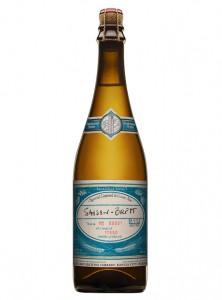
Boulevard Brewing Company (Kansas City, Missouri)
Saison/Farmhouse Ale, 8.5% ABV
The Smokestack Series are beers with labels that look like they’re written by hand. Not everything in the series can be aged, but the ones with the handwritten-style labels usually can. This is similar to Orval, as it contains active brettanomyces. It’s not all that awesome when it’s brand-new because the brett hasn’t had time to work. But as this beer ages, it’s going to get more farmy and funky. It needs at least a year before you drink it, but it can easily go five to seven years. Another beer in the Smokestack Series, Rye-On-Rye is good when it’s new, but it’s a little hot. It’s another three- to five- year beer. The same applies to the Bourbon Barrel Quad.
Rodenbach Vintage
Brouwerij Rodenbach/Palm, (Roeselare, Belgium)
Sour Red/Brown Ale, 7% ABV
This is new to this market. The 2011 Vintage is the first we’ve received from Rodenbach. They’ve been brewing for 150 years. The Vintage series is similar to the Grand Cru series – single-barrel bottlings of a particularly good beer. The 2011 Vintage came from their number 95 barrel. They already have a few years of age on them when we buy them. This is great to drink now, and it’s not going to significantly change over the next couple of years. But over the long term, it’s going to change and could be the backbone of your cellar for seven to 10 years.
Future Pick: Old Foghorn Barleywine Style Ale
Anchor Brewing Company (San Francisco, California)
Barleywine, 8-10% ABV
We don’t have it right now, but you should definitely pick up the Anchor Old Foghorn Barleywine when it comes out. It should arrive in January or February. It’s a consistent product and easy to find, but it will age well and pick up worn leather, cognac and cigar room flavors.
Cellar Group Three: Limited, Large-Quantity Releases
Labyrinth (Crooked Line Series)
Uinta Brewing Company (Salt Lake City, Utah)
American Imperial/Double Stout, 13.2% ABV
Labyrinth is a big beer that Unita does once a year. Their distribution is kind of spotty, so you should pick this up if you see it. This is their barrel-aged, quadruple black ale. There’s also Cockeyed Cooper, Unita’s barrel-aged barleywine. These are great to drink now or in three to five years.
Halia
Goose lsland Beer Co. (Chicago, Illinois)
American Wild Ale, 7.5% ABV
This is one of the fruit series beers from Goose Island. Halia is made with peaches. [There are also Gillian (strawberry), Lolita (raspberry) and Juliet (blackberry)]. It’s good to drink now. It won’t change much over the next few years but should get some interesting characteristics in seven to 10 years.
(Author’s note: Beer styles and ABVs were obtained from the brewers’ websites, Beer Advocate or Untappd.)

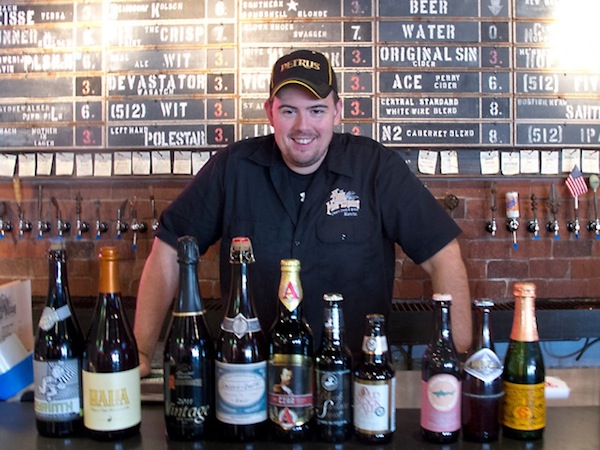


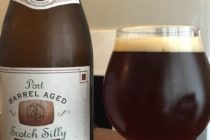
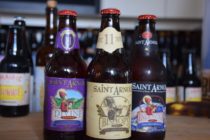

Follow Us